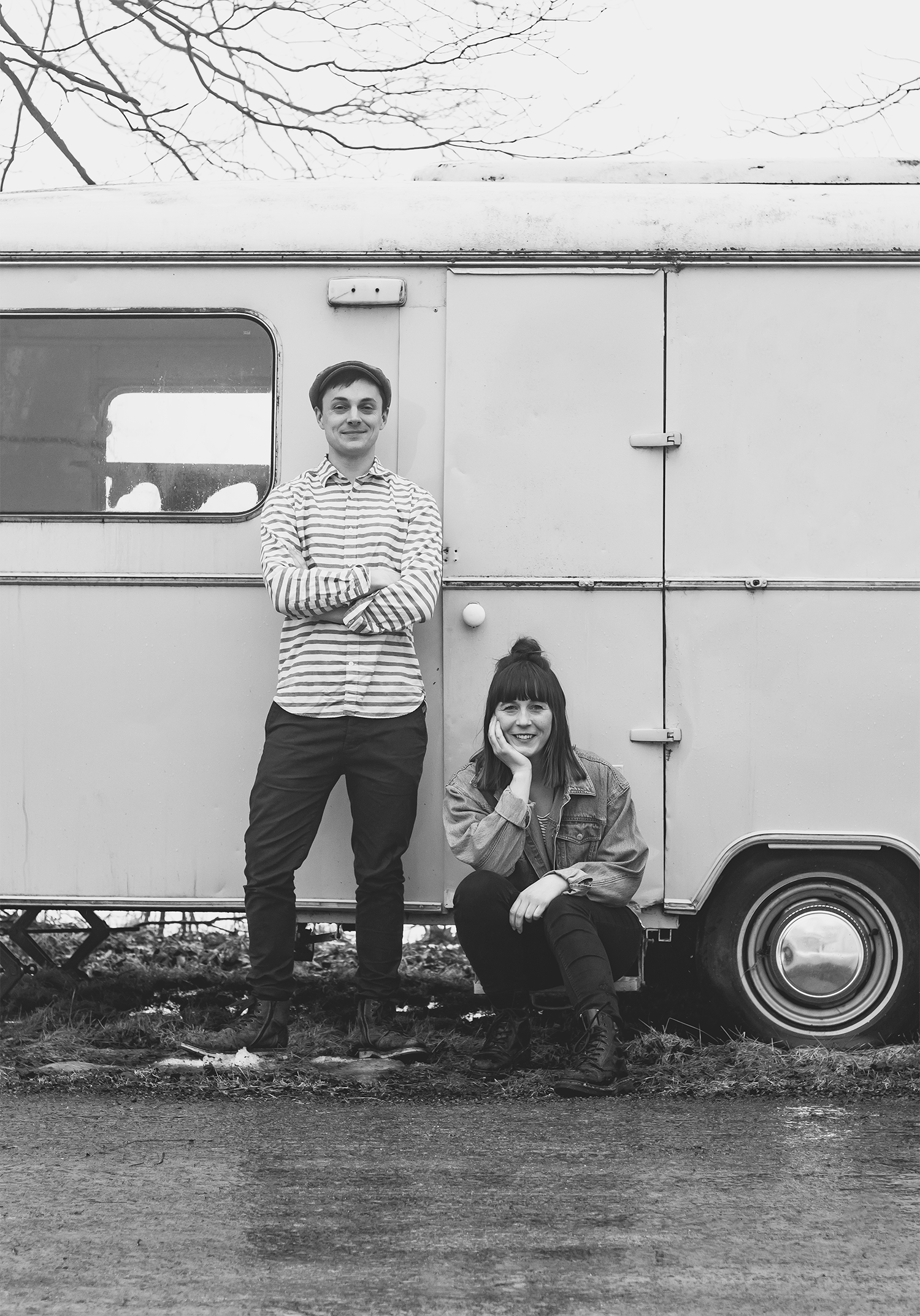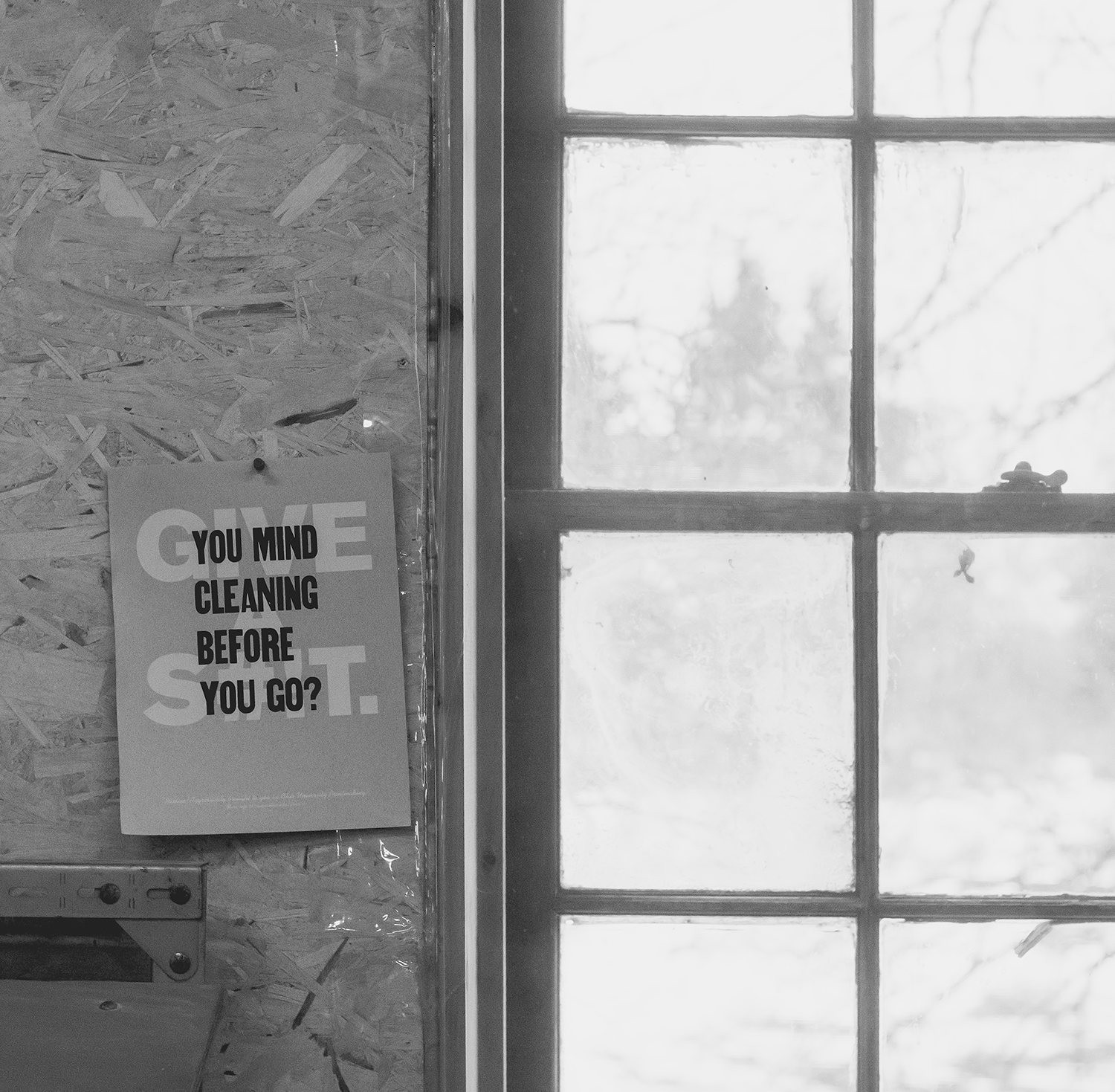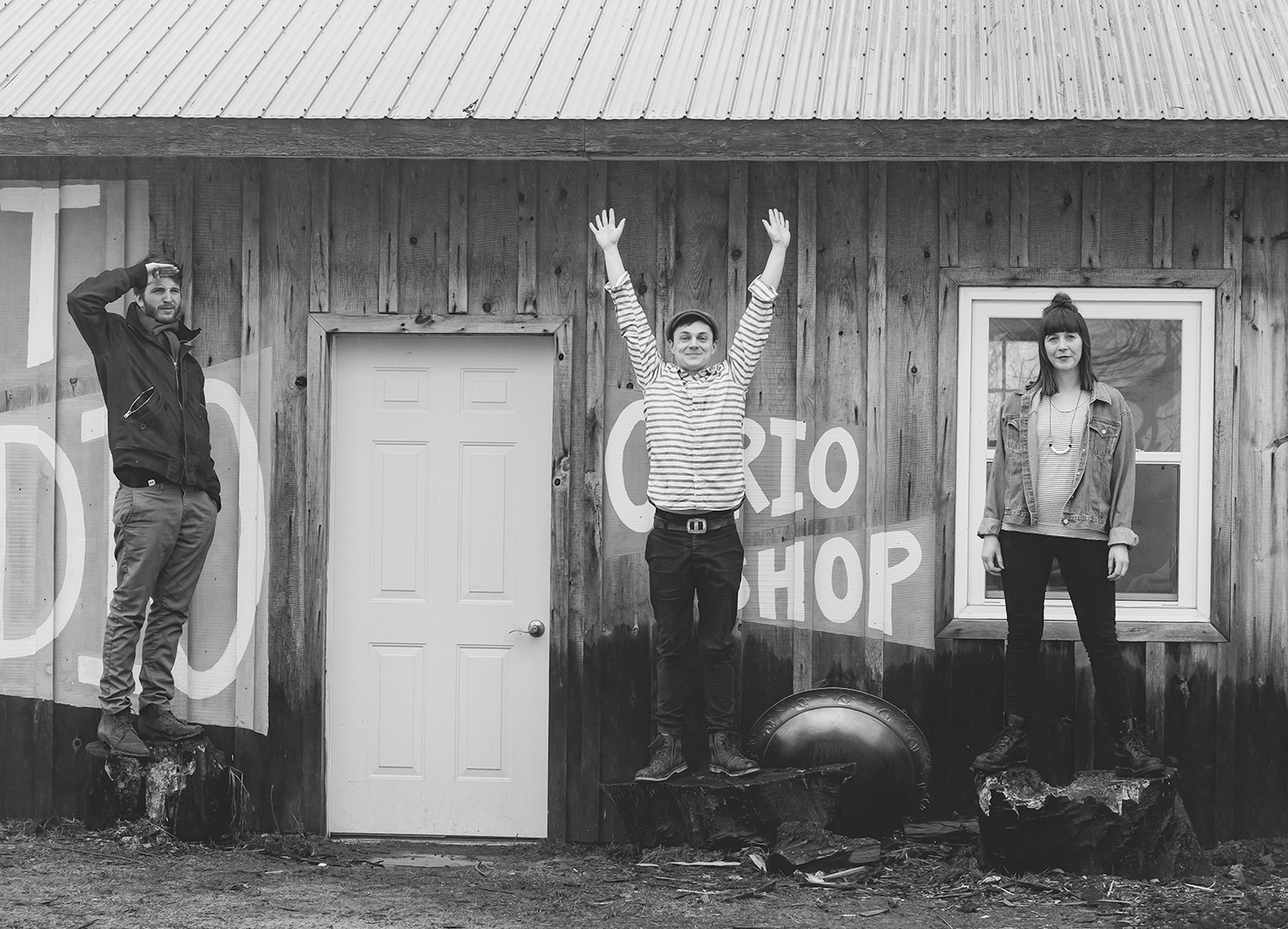AN INSIDE LOOK INTO SPARK BOX STUDIO
One of the benefits of being married to an artist is having the opportunity to explore fun and unique places that I otherwise probably wouldn't visit, and connecting with awesome people along the way. Our most recent art adventure? Spending a weekend at Spark Box Studio in Picton, Ontario!
Located just a couple hours east of Toronto, Spark Box Studio offers artists and creatives a quiet, peaceful place to live and work with few distractions (aside from admiring the beautiful natural landscapes and farmhouses, and tasting all the delicious local food). Whether you're a printmaker, painter, photographer, writer, designer, or essentially any other kind of artist, this residency is the perfect getaway for someone seeking space and time to just create.
My husband originally met the owners, Kyle Topping and Chrissy Poitras, while attending an SGCI printmaking conference a couple years back. They recently collaborated on a screen print (available here), so we drove up for a long weekend for them to print the edition. I spent my time reading, writing, shooting photos, and trying to unplug from the day-to-day.
On the last morning of our stay, we sat around the kitchen table sipping on coffee and chatting with Chrissy and Kyle about life, in particular how Spark Box came to be, what they've learned about owning a business, and how their interest in sustainability and protecting nature transcend into their art practice and business in general.
What inspired you to open Spark Box Studio?
Spark Box essentially came out of this need to create. We started talking about how if we wanted to continue our practice we would need a studio that would also help pay the bills. We were like, "What if we got a two bedroom house and we could rent out the other bedroom to subsidize some of the income." Throughout the start up process, we realized that we ultimately wanted to teach emerging artists about entrepreneurship and provide them with resources that we didn't get in school. In an academic setting, artists are often made to believe that their ideas are worth seeing and hearing, but aren't valuable. Spark Box was a good way for us to lean into a project that focused on showing artists that they can make interesting work and earn a living outside of being a teacher, and providing them with the time and space to do so.
What are some challenges you've faced as entrepreneurs and how did you overcome them?
Launching Spark Box was the biggest crash course in business; they don't teach you these things in art school. We had to struggle through it and learn through trial and error, which is all about being willing to compromise and allow new doors to open. If you're rigid in your approach, then it's not going to be an enjoyable path because you'll just feel like a failure all the time. What's good about the way we fell into this job is that there was zero expectation. We knew we were both going to be somewhere together, doing something. We don't see anything being a failure, but rather a stepping stone that lead us in the direction that we needed to go, and that's the fun and terrible thing about running something on your own. You build something up, you put a lot of time into it, and it might not work, and you have to be fine with that. You have to be like, "Okay. That didn't work. I'm not going to dwell on it. I'm not going to let this eat up too much of my energy. I'm just going to move onto the next thing and take what I learned from that experience and apply it to whatever I'm doing next."
What one piece of advice would you give to someone LOOKING TO start their own business?
The beauty of getting into a situation where you start a business is that you have to be a little carefree. We had literally zero clue what we were getting ourselves into. When we first started, it was a lot of, "We'll jump into this and figure it out," and "We'll say 'YES' to everything." If we had thought through every part of what it takes to do this job, we could have very easily talked ourselves out of it. What works for us is that one of us will just jump into something full-heartedly and the other will try to see the whole picture and map it out – that's been a real asset to Spark Box. Figuring out what makes you happy and how that defines your success is also really important. Put blinders up to what everyone else is doing, think about what makes you really happy, and put all of your energy in the direction where you ultimately want to go.
You both are also practicing artists. How would you describe your work?
KYLE | I'd call my work science mythologies or fictional science. I take old images from the 1900s – engravings, book plates, illustrations – and recombine them into a unique design. I do this through a different combination of printmaking methods like etching, relief, polymer plates, and screen printing. Generally, my work points toward issues dealing with the environment, scientific discoveries, and scientific hypotheses ... with 15% dry humor. For example, I've been doing some work about the icebergs melting and global warming lately. I do a lot of different things that fall into various categories, but typically what they're doing is highlighting visual scientific language like diagrams and graphs. Often it's about finding things in science that I'm interested in and trying to make work that talks about it, or proposing a problem that I foresee in the hopes of sparking a conversation.
CHRISSY | I'm sort of the opposite of Kyle. I'm interested in color and form. How do those two things work together? How can I make them feel uncomfortable while also being pleasing? I recently started using the term cloy, something that's sickeningly beautiful. I was a serious germaphobe, though I've gotten better. I started drawing gross stains that would make me feel like, "Eew... I don't want to eat here," or "I feel really uncomfortable about this bathroom..." Then I combined those with elements that I thought were really pretty, and that just expanded into what I do all the time now. I feel very removed from that original place, and now I want to make things that feel a bit more spatially interesting. Ultimately, the root of it is playing with different forms, textures, and colors, and seeing what I can do with those that's new and exciting.
How do environmental issues and sustainability influence the way you run this residency?
It's about being green-minded and conscious about what you use. If we decide to screen print, how much water does that use, and how are we processing that water? What are we putting back into the ground? In printmaking especially, people aren't always open to alternative practices. To convert people that have been doing it one way for a long time, to try something that's going to take a little bit longer and may be a little bit more fussy, is tough. For us, being non-toxic and environmentally-minded is about doing everything we can and educating artists that stay with us on how to be more conscious. We live in a rural community and we're on a well. What goes down our drain, we will drink later in life. Being on a well is great because it's something we can constantly be like, "Don't have a 30-minute shower every day." We will run out of water and the whole house will be effected, so your choice to over shower will impact four other people. It's so easy to be like, "One change won't do anything to help the planet..." But when you're in an environment where one decision does directly impact other people, it's a lot easier to see things that way.
Interested in BECOMING a Spark Box residenT?
Thanks so much to Chrissy and Kyle for being such lovely hosts and for collaborating on this post!









